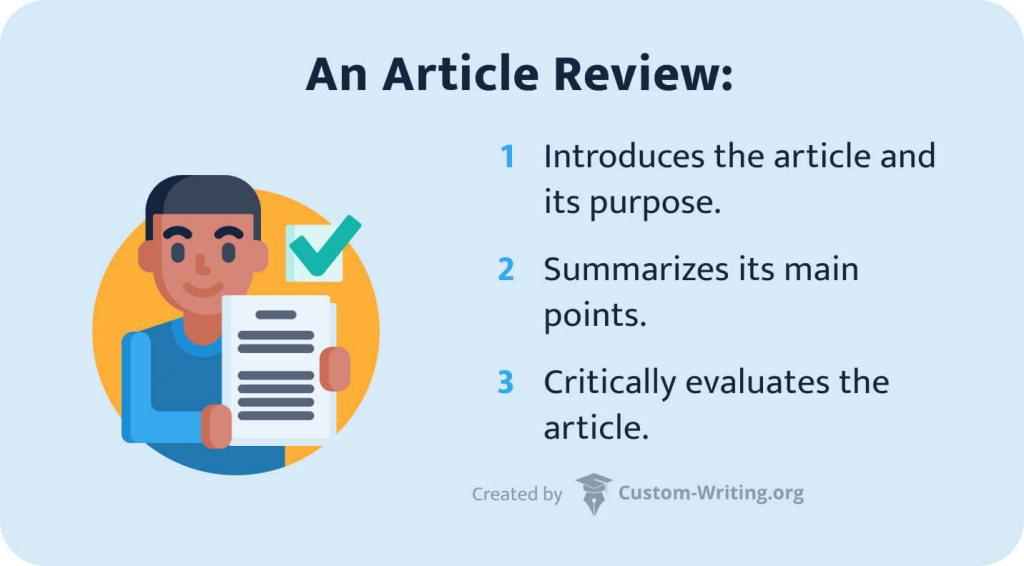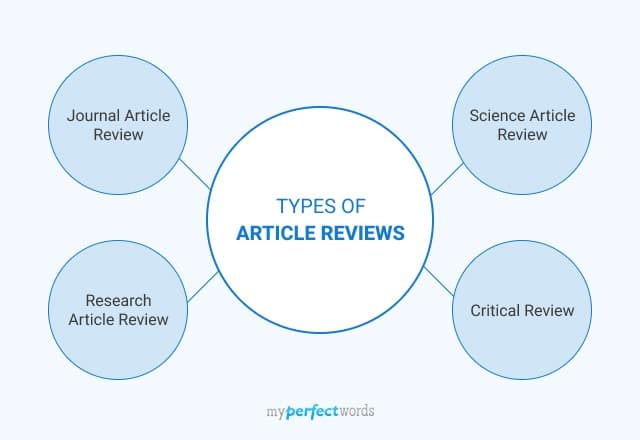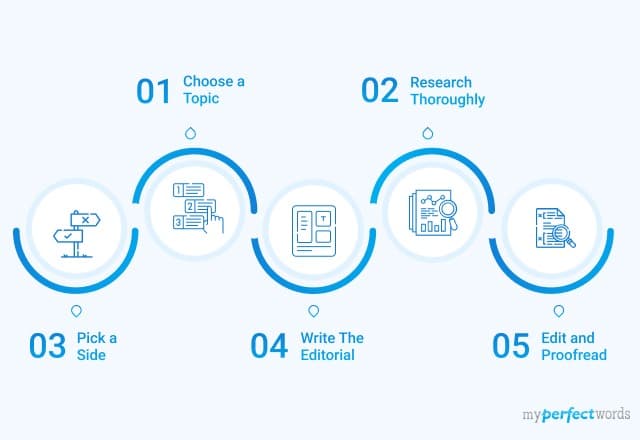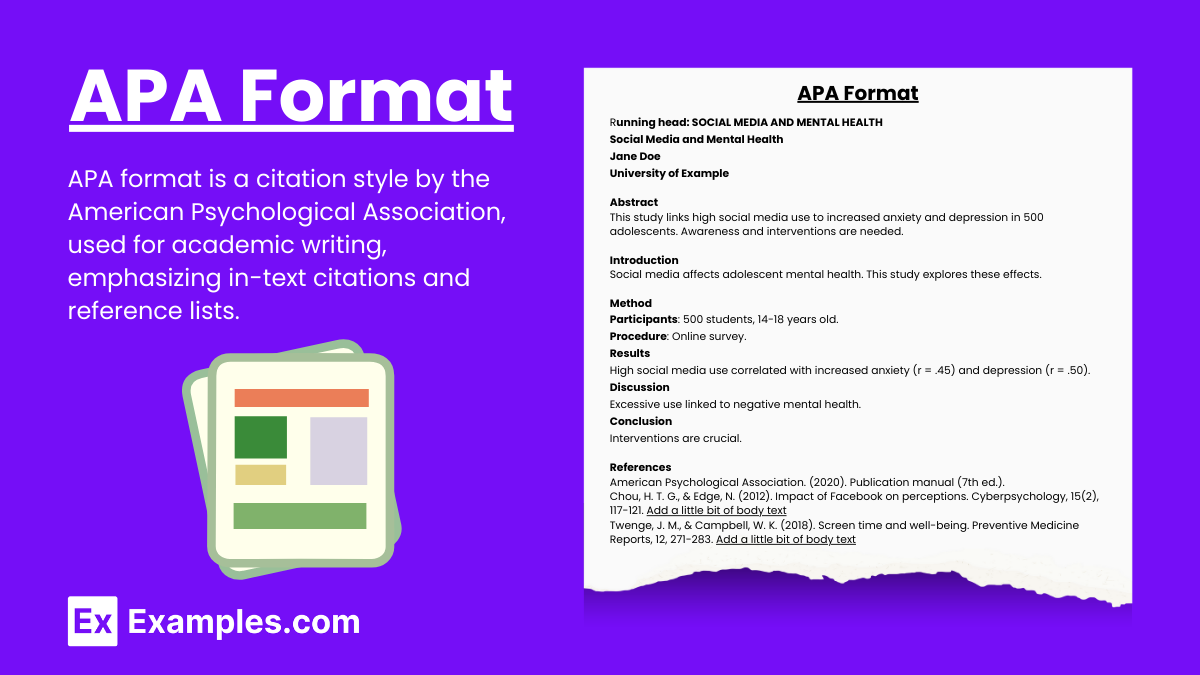
How to Write an Article Review: Tips and Examples

Did you know that article reviews are not just academic exercises but also a valuable skill in today's information age? In a world inundated with content, being able to dissect and evaluate articles critically can help you separate the wheat from the chaff. Whether you're a student aiming to excel in your coursework or a professional looking to stay well-informed, mastering the art of writing article reviews is an invaluable skill.
Short Description
In this article, our research paper writing service experts will start by unraveling the concept of article reviews and discussing the various types. You'll also gain insights into the art of formatting your review effectively. To ensure you're well-prepared, we'll take you through the pre-writing process, offering tips on setting the stage for your review. But it doesn't stop there. You'll find a practical example of an article review to help you grasp the concepts in action. To complete your journey, we'll guide you through the post-writing process, equipping you with essential proofreading techniques to ensure your work shines with clarity and precision!
What Is an Article Review: Grasping the Concept
A review article is a type of professional paper writing that demands a high level of in-depth analysis and a well-structured presentation of arguments. It is a critical, constructive evaluation of literature in a particular field through summary, classification, analysis, and comparison.
If you write a scientific review, you have to use database searches to portray the research. Your primary goal is to summarize everything and present a clear understanding of the topic you've been working on.
Writing Involves:
- Summarization, classification, analysis, critiques, and comparison.
- The analysis, evaluation, and comparison require the use of theories, ideas, and research relevant to the subject area of the article.
- It is also worth nothing if a review does not introduce new information, but instead presents a response to another writer's work.
- Check out other samples to gain a better understanding of how to review the article.
Types of Review
When it comes to article reviews, there's more than one way to approach the task. Understanding the various types of reviews is like having a versatile toolkit at your disposal. In this section, we'll walk you through the different dimensions of review types, each offering a unique perspective and purpose. Whether you're dissecting a scholarly article, critiquing a piece of literature, or evaluating a product, you'll discover the diverse landscape of article reviews and how to navigate it effectively.
.webp)
Journal Article Review
Just like other types of reviews, a journal article review assesses the merits and shortcomings of a published work. To illustrate, consider a review of an academic paper on climate change, where the writer meticulously analyzes and interprets the article's significance within the context of environmental science.
Research Article Review
Distinguished by its focus on research methodologies, a research article review scrutinizes the techniques used in a study and evaluates them in light of the subsequent analysis and critique. For instance, when reviewing a research article on the effects of a new drug, the reviewer would delve into the methods employed to gather data and assess their reliability.
Science Article Review
In the realm of scientific literature, a science article review encompasses a wide array of subjects. Scientific publications often provide extensive background information, which can be instrumental in conducting a comprehensive analysis. For example, when reviewing an article about the latest breakthroughs in genetics, the reviewer may draw upon the background knowledge provided to facilitate a more in-depth evaluation of the publication.
Need a Hand From Professionals?
Address to Our Writers and Get Assistance in Any Questions!
Formatting an Article Review
The format of the article should always adhere to the citation style required by your professor. If you're not sure, seek clarification on the preferred format and ask him to clarify several other pointers to complete the formatting of an article review adequately.
How Many Publications Should You Review?
- In what format should you cite your articles (MLA, APA, ASA, Chicago, etc.)?
- What length should your review be?
- Should you include a summary, critique, or personal opinion in your assignment?
- Do you need to call attention to a theme or central idea within the articles?
- Does your instructor require background information?
When you know the answers to these questions, you may start writing your assignment. Below are examples of MLA and APA formats, as those are the two most common citation styles.
Using the APA Format
Articles appear most commonly in academic journals, newspapers, and websites. If you write an article review in the APA format, you will need to write bibliographical entries for the sources you use:
- Web : Author [last name], A.A [first and middle initial]. (Year, Month, Date of Publication). Title. Retrieved from {link}
- Journal : Author [last name], A.A [first and middle initial]. (Publication Year). Publication Title. Periodical Title, Volume(Issue), pp.-pp.
- Newspaper : Author [last name], A.A [first and middle initial]. (Year, Month, Date of Publication). Publication Title. Magazine Title, pp. xx-xx.
Using MLA Format
- Web : Last, First Middle Initial. “Publication Title.” Website Title. Website Publisher, Date Month Year Published. Web. Date Month Year Accessed.
- Newspaper : Last, First M. “Publication Title.” Newspaper Title [City] Date, Month, Year Published: Page(s). Print.
- Journal : Last, First M. “Publication Title.” Journal Title Series Volume. Issue (Year Published): Page(s). Database Name. Web. Date Month Year Accessed.
Enhance your writing effortlessly with EssayPro.com , where you can order an article review or any other writing task. Our team of expert writers specializes in various fields, ensuring your work is not just summarized, but deeply analyzed and professionally presented. Ideal for students and professionals alike, EssayPro offers top-notch writing assistance tailored to your needs. Elevate your writing today with our skilled team at your article review writing service !
.jpg)
The Pre-Writing Process
Facing this task for the first time can really get confusing and can leave you unsure of where to begin. To create a top-notch article review, start with a few preparatory steps. Here are the two main stages from our dissertation services to get you started:
Step 1: Define the right organization for your review. Knowing the future setup of your paper will help you define how you should read the article. Here are the steps to follow:
- Summarize the article — seek out the main points, ideas, claims, and general information presented in the article.
- Define the positive points — identify the strong aspects, ideas, and insightful observations the author has made.
- Find the gaps —- determine whether or not the author has any contradictions, gaps, or inconsistencies in the article and evaluate whether or not he or she used a sufficient amount of arguments and information to support his or her ideas.
- Identify unanswered questions — finally, identify if there are any questions left unanswered after reading the piece.
Step 2: Move on and review the article. Here is a small and simple guide to help you do it right:
- Start off by looking at and assessing the title of the piece, its abstract, introductory part, headings and subheadings, opening sentences in its paragraphs, and its conclusion.
- First, read only the beginning and the ending of the piece (introduction and conclusion). These are the parts where authors include all of their key arguments and points. Therefore, if you start with reading these parts, it will give you a good sense of the author's main points.
- Finally, read the article fully.
These three steps make up most of the prewriting process. After you are done with them, you can move on to writing your own review—and we are going to guide you through the writing process as well.
Outline and Template
As you progress with reading your article, organize your thoughts into coherent sections in an outline. As you read, jot down important facts, contributions, or contradictions. Identify the shortcomings and strengths of your publication. Begin to map your outline accordingly.
If your professor does not want a summary section or a personal critique section, then you must alleviate those parts from your writing. Much like other assignments, an article review must contain an introduction, a body, and a conclusion. Thus, you might consider dividing your outline according to these sections as well as subheadings within the body. If you find yourself troubled with the pre-writing and the brainstorming process for this assignment, seek out a sample outline.
Your custom essay must contain these constituent parts:
- Pre-Title Page - Before diving into your review, start with essential details: article type, publication title, and author names with affiliations (position, department, institution, location, and email). Include corresponding author info if needed.
- Running Head - In APA format, use a concise title (under 40 characters) to ensure consistent formatting.
- Summary Page - Optional but useful. Summarize the article in 800 words, covering background, purpose, results, and methodology, avoiding verbatim text or references.
- Title Page - Include the full title, a 250-word abstract, and 4-6 keywords for discoverability.
- Introduction - Set the stage with an engaging overview of the article.
- Body - Organize your analysis with headings and subheadings.
- Works Cited/References - Properly cite all sources used in your review.
- Optional Suggested Reading Page - If permitted, suggest further readings for in-depth exploration.
- Tables and Figure Legends (if instructed by the professor) - Include visuals when requested by your professor for clarity.
Example of an Article Review
You might wonder why we've dedicated a section of this article to discuss an article review sample. Not everyone may realize it, but examining multiple well-constructed examples of review articles is a crucial step in the writing process. In the following section, our essay writing service experts will explain why.
Looking through relevant article review examples can be beneficial for you in the following ways:
- To get you introduced to the key works of experts in your field.
- To help you identify the key people engaged in a particular field of science.
- To help you define what significant discoveries and advances were made in your field.
- To help you unveil the major gaps within the existing knowledge of your field—which contributes to finding fresh solutions.
- To help you find solid references and arguments for your own review.
- To help you generate some ideas about any further field of research.
- To help you gain a better understanding of the area and become an expert in this specific field.
- To get a clear idea of how to write a good review.
View Our Writer’s Sample Before Crafting Your Own!
Why Have There Been No Great Female Artists?
Steps for Writing an Article Review
Here is a guide with critique paper format on how to write a review paper:
.webp)
Step 1: Write the Title
First of all, you need to write a title that reflects the main focus of your work. Respectively, the title can be either interrogative, descriptive, or declarative.
Step 2: Cite the Article
Next, create a proper citation for the reviewed article and input it following the title. At this step, the most important thing to keep in mind is the style of citation specified by your instructor in the requirements for the paper. For example, an article citation in the MLA style should look as follows:
Author's last and first name. "The title of the article." Journal's title and issue(publication date): page(s). Print
Abraham John. "The World of Dreams." Virginia Quarterly 60.2(1991): 125-67. Print.
Step 3: Article Identification
After your citation, you need to include the identification of your reviewed article:
- Title of the article
- Title of the journal
- Year of publication
All of this information should be included in the first paragraph of your paper.
The report "Poverty increases school drop-outs" was written by Brian Faith – a Health officer – in 2000.
Step 4: Introduction
Your organization in an assignment like this is of the utmost importance. Before embarking on your writing process, you should outline your assignment or use an article review template to organize your thoughts coherently.
- If you are wondering how to start an article review, begin with an introduction that mentions the article and your thesis for the review.
- Follow up with a summary of the main points of the article.
- Highlight the positive aspects and facts presented in the publication.
- Critique the publication by identifying gaps, contradictions, disparities in the text, and unanswered questions.
Step 5: Summarize the Article
Make a summary of the article by revisiting what the author has written about. Note any relevant facts and findings from the article. Include the author's conclusions in this section.
Step 6: Critique It
Present the strengths and weaknesses you have found in the publication. Highlight the knowledge that the author has contributed to the field. Also, write about any gaps and/or contradictions you have found in the article. Take a standpoint of either supporting or not supporting the author's assertions, but back up your arguments with facts and relevant theories that are pertinent to that area of knowledge. Rubrics and templates can also be used to evaluate and grade the person who wrote the article.
Step 7: Craft a Conclusion
In this section, revisit the critical points of your piece, your findings in the article, and your critique. Also, write about the accuracy, validity, and relevance of the results of the article review. Present a way forward for future research in the field of study. Before submitting your article, keep these pointers in mind:
- As you read the article, highlight the key points. This will help you pinpoint the article's main argument and the evidence that they used to support that argument.
- While you write your review, use evidence from your sources to make a point. This is best done using direct quotations.
- Select quotes and supporting evidence adequately and use direct quotations sparingly. Take time to analyze the article adequately.
- Every time you reference a publication or use a direct quotation, use a parenthetical citation to avoid accidentally plagiarizing your article.
- Re-read your piece a day after you finish writing it. This will help you to spot grammar mistakes and to notice any flaws in your organization.
- Use a spell-checker and get a second opinion on your paper.
The Post-Writing Process: Proofread Your Work
Finally, when all of the parts of your article review are set and ready, you have one last thing to take care of — proofreading. Although students often neglect this step, proofreading is a vital part of the writing process and will help you polish your paper to ensure that there are no mistakes or inconsistencies.
To proofread your paper properly, start by reading it fully and checking the following points:
- Punctuation
- Other mistakes
Afterward, take a moment to check for any unnecessary information in your paper and, if found, consider removing it to streamline your content. Finally, double-check that you've covered at least 3-4 key points in your discussion.
And remember, if you ever need help with proofreading, rewriting your essay, or even want to buy essay , our friendly team is always here to assist you.
Need an Article REVIEW WRITTEN?
Just send us the requirements to your paper and watch one of our writers crafting an original paper for you.
What Is A Review Article?
How to write an article review, how to write an article review in apa format.

Daniel Parker
is a seasoned educational writer focusing on scholarship guidance, research papers, and various forms of academic essays including reflective and narrative essays. His expertise also extends to detailed case studies. A scholar with a background in English Literature and Education, Daniel’s work on EssayPro blog aims to support students in achieving academic excellence and securing scholarships. His hobbies include reading classic literature and participating in academic forums.

is an expert in nursing and healthcare, with a strong background in history, law, and literature. Holding advanced degrees in nursing and public health, his analytical approach and comprehensive knowledge help students navigate complex topics. On EssayPro blog, Adam provides insightful articles on everything from historical analysis to the intricacies of healthcare policies. In his downtime, he enjoys historical documentaries and volunteering at local clinics.
Related Articles

How to Write an Article Review: Template & Examples
An article review is an academic assignment that invites you to study a piece of academic research closely. Then, you should present its summary and critically evaluate it using the knowledge you’ve gained in class and during your independent study. If you get such a task at college or university, you shouldn’t confuse it with a response paper, which is a distinct assignment with other purposes (we’ll talk about it in detail below).
In this article, prepared by Custom-Writing experts, you’ll find:
- the intricacies of article review writing;
- the difference between an article review and similar assignments;
- a step-by-step algorithm for review composition;
- a couple of samples to guide you throughout the writing process.
So, if you wish to study our article review example and discover helpful writing tips, keep reading.
❓ What Is an Article Review?
- ✍️ Writing Steps
📑 Article Review Format
🔗 references.
An article review is an academic paper that summarizes and critically evaluates the information presented in your selected article.

The first thing you should note when approaching the task of an article review is that not every article is suitable for this assignment. Let’s have a look at the variety of articles to understand what you can choose from.
Popular Vs. Scholarly Articles
In most cases, you’ll be required to review a scholarly, peer-reviewed article – one composed in compliance with rigorous academic standards. Yet, the Web is also full of popular articles that don’t present original scientific value and shouldn’t be selected for a review.
Not sure how to distinguish these two types? Here is a comparative table to help you out.
Article Review vs. Response Paper
Now, let’s consider the difference between an article review and a response paper:
- If you’re assigned to critique a scholarly article , you will need to compose an article review .
- If your subject of analysis is a popular article , you can respond to it with a well-crafted response paper .
The reason for such distinctions is the quality and structure of these two article types. Peer-reviewed, scholarly articles have clear-cut quality criteria, allowing you to conduct and present a structured assessment of the assigned material. Popular magazines have loose or non-existent quality criteria and don’t offer an opportunity for structured evaluation. So, they are only fit for a subjective response, in which you can summarize your reactions and emotions related to the reading material.
All in all, you can structure your response assignments as outlined in the tips below.
✍️ How to Write an Article Review: Step by Step
Here is a tried and tested algorithm for article review writing from our experts. We’ll consider only the critical review variety of this academic assignment. So, let’s get down to the stages you need to cover to get a stellar review.
Read the Article
As with any reviews, reports, and critiques, you must first familiarize yourself with the assigned material. It’s impossible to review something you haven’t read, so set some time for close, careful reading of the article to identify:
- The author’s main points and message.
- The arguments they use to prove their points.
- The methodology they use to approach the subject.
In terms of research type , your article will usually belong to one of three types explained below.
Summarize the Article
Now that you’ve read the text and have a general impression of the content, it’s time to summarize it for your readers. Look into the article’s text closely to determine:
- The thesis statement , or general message of the author.
- Research question, purpose, and context of research.
- Supporting points for the author’s assumptions and claims.
- Major findings and supporting evidence.
As you study the article thoroughly, make notes on the margins or write these elements out on a sheet of paper. You can also apply a different technique: read the text section by section and formulate its gist in one phrase or sentence. Once you’re done, you’ll have a summary skeleton in front of you.
Evaluate the Article
The next step of review is content evaluation. Keep in mind that various research types will require a different set of review questions. Here is a complete list of evaluation points you can include.
Write the Text
After completing the critical review stage, it’s time to compose your article review.
The format of this assignment is standard – you will have an introduction, a body, and a conclusion. The introduction should present your article and summarize its content. The body will contain a structured review according to all four dimensions covered in the previous section. The concluding part will typically recap all the main points you’ve identified during your assessment.
It is essential to note that an article review is, first of all, an academic assignment. Therefore, it should follow all rules and conventions of academic composition, such as:
- No contractions . Don’t use short forms, such as “don’t,” “can’t,” “I’ll,” etc. in academic writing. You need to spell out all those words.
- Formal language and style . Avoid conversational phrasing and words that you would naturally use in blog posts or informal communication. For example, don’t use words like “pretty,” “kind of,” and “like.”
- Third-person narrative . Academic reviews should be written from the third-person point of view, avoiding statements like “I think,” “in my opinion,” and so on.
- No conversational forms . You shouldn’t turn to your readers directly in the text by addressing them with the pronoun “you.” It’s vital to keep the narrative neutral and impersonal.
- Proper abbreviation use . Consult the list of correct abbreviations , like “e.g.” or “i.e.,” for use in your academic writing. If you use informal abbreviations like “FYA” or “f.i.,” your professor will reduce the grade.
- Complete sentences . Make sure your sentences contain the subject and the predicate; avoid shortened or sketch-form phrases suitable for a draft only.
- No conjunctions at the beginning of a sentence . Remember the FANBOYS rule – don’t start a sentence with words like “and” or “but.” They often seem the right way to build a coherent narrative, but academic writing rules disfavor such usage.
- No abbreviations or figures at the beginning of a sentence . Never start a sentence with a number — spell it out if you need to use it anyway. Besides, sentences should never begin with abbreviations like “e.g.”
Finally, a vital rule for an article review is properly formatting the citations. We’ll discuss the correct use of citation styles in the following section.
When composing an article review, keep these points in mind:
- Start with a full reference to the reviewed article so the reader can locate it quickly.
- Ensure correct formatting of in-text references.
- Provide a complete list of used external sources on the last page of the review – your bibliographical entries .
You’ll need to understand the rules of your chosen citation style to meet all these requirements. Below, we’ll discuss the two most common referencing styles – APA and MLA.
Article Review in APA
When you need to compose an article review in the APA format , here is the general bibliographical entry format you should use for journal articles on your reference page:
- Author’s last name, First initial. Middle initial. (Year of Publication). Name of the article. Name of the Journal, volume (number), pp. #-#. https://doi.org/xx.xxx/yyyy
Horigian, V. E., Schmidt, R. D., & Feaster, D. J. (2021). Loneliness, mental health, and substance use among US young adults during COVID-19. Journal of Psychoactive Drugs, 53 (1), pp. 1-9. https://doi.org/10.1080/02791072.2020.1836435
Your in-text citations should follow the author-date format like this:
- If you paraphrase the source and mention the author in the text: According to Horigian et al. (2021), young adults experienced increased levels of loneliness, depression, and anxiety during the pandemic.
- If you paraphrase the source and don’t mention the author in the text: Young adults experienced increased levels of loneliness, depression, and anxiety during the pandemic (Horigian et al., 2021).
- If you quote the source: As Horigian et al. (2021) point out, there were “elevated levels of loneliness, depression, anxiety, alcohol use, and drug use among young adults during COVID-19” (p. 6).
Note that your in-text citations should include “et al.,” as in the examples above, if your article has 3 or more authors. If you have one or two authors, your in-text citations would look like this:
- One author: “According to Smith (2020), depression is…” or “Depression is … (Smith, 2020).”
- Two authors: “According to Smith and Brown (2020), anxiety means…” or “Anxiety means (Smith & Brown, 2020).”
Finally, in case you have to review a book or a website article, here are the general formats for citing these source types on your APA reference list.
Article Review in MLA
If your assignment requires MLA-format referencing, here’s the general format you should use for citing journal articles on your Works Cited page:
- Author’s last name, First name. “Title of an Article.” Title of the Journal , vol. #, no. #, year, pp. #-#.
Horigian, Viviana E., et al. “Loneliness, Mental Health, and Substance Use Among US Young Adults During COVID-19.” Journal of Psychoactive Drugs , vol. 53, no. 1, 2021, pp. 1-9.
In-text citations in the MLA format follow the author-page citation format and look like this:
- According to Horigian et al., young adults experienced increased levels of loneliness, depression, and anxiety during the pandemic (6).
- Young adults experienced increased levels of loneliness, depression, and anxiety during the pandemic (Horigian et al. 6).
Like in APA, the abbreviation “et al.” is only needed in MLA if your article has 3 or more authors.
If you need to cite a book or a website page, here are the general MLA formats for these types of sources.
✅ Article Review Template
Here is a handy, universal article review template to help you move on with any review assignment. We’ve tried to make it as generic as possible to guide you in the academic process.
📝 Article Review Examples
The theory is good, but practice is even better. Thus, we’ve created three brief examples to show you how to write an article review. You can study the full-text samples by following the links.
📃 Men, Women, & Money
This article review examines a famous piece, “Men, Women & Money – How the Sexes Differ with Their Finances,” published by Amy Livingston in 2020. The author of this article claims that men generally spend more money than women. She makes this conclusion from a close analysis of gender-specific expenditures across five main categories: food, clothing, cars, entertainment, and general spending patterns. Livingston also looks at men’s approach to saving to argue that counter to the common perception of women’s light-hearted attitude to money, men are those who spend more on average.
📃 When and Why Nationalism Beats Globalism
This is a review of Jonathan Heidt’s 2016 article titled “When and Why Nationalism Beats Globalism,” written as an advocacy of right-wing populism rising in many Western states. The author illustrates the case with the election of Donald Trump as the US President and the rise of right-wing rhetoric in many Western countries. These examples show how nationalist sentiment represents a reaction to global immigration and a failure of globalization.
📃 Sleep Deprivation
This is a review of the American Heart Association’s article titled “The Dangers of Sleep Deprivation.” It discusses how the national organization concerned with the American population’s cardiovascular health links the lack of high-quality sleep to far-reaching health consequences. The organization’s experts reveal how a consistent lack of sleep leads to Alzheimer’s disease development, obesity, type 2 diabetes, etc.
✏️ Article Review FAQ
A high-quality article review should summarize the assigned article’s content and offer data-backed reactions and evaluations of its quality in terms of the article’s purpose, methodology, and data used to argue the main points. It should be detailed, comprehensive, objective, and evidence-based.
The purpose of writing a review is to allow students to reflect on research quality and showcase their critical thinking and evaluation skills. Students should exhibit their mastery of close reading of research publications and their unbiased assessment.
The content of your article review will be the same in any format, with the only difference in the assignment’s formatting before submission. Ensure you have a separate title page made according to APA standards and cite sources using the parenthetical author-date referencing format.
You need to take a closer look at various dimensions of an assigned article to compose a valuable review. Study the author’s object of analysis, the purpose of their research, the chosen method, data, and findings. Evaluate all these dimensions critically to see whether the author has achieved the initial goals. Finally, offer improvement recommendations to add a critique aspect to your paper.
- Scientific Article Review: Duke University
- Book and Article Reviews: William & Mary, Writing Resources Center
- Sample Format for Reviewing a Journal Article: Boonshoft School of Medicine
- Research Paper Review – Structure and Format Guidelines: New Jersey Institute of Technology
- Article Review: University of Waterloo
- Article Review: University of South Australia
- How to Write a Journal Article Review: University of Newcastle Library Guides
- Writing Help: The Article Review: Central Michigan University Libraries
- Write a Critical Review of a Scientific Journal Article: McLaughlin Library
- Share to Facebook
- Share to Twitter
- Share to LinkedIn
- Share to email

Short essays answer a specific question on the subject. They usually are anywhere between 250 words and 750 words long. A paper with less than 250 words isn’t considered a finished text, so it doesn’t fall under the category of a short essay. Essays of such format are required for...

High school and college students often face challenges when crafting a compare-and-contrast essay. A well-written paper of this kind needs to be structured appropriately to earn you good grades. Knowing how to organize your ideas allows you to present your ideas in a coherent and logical manner This article by...

If you’re a student, you’ve heard about a formal essay: a factual, research-based paper written in 3rd person. Most students have to produce dozens of them during their educational career. Writing a formal essay may not be the easiest task. But fear not: our custom-writing team is here to guide...

Narrative essays are unlike anything you wrote throughout your academic career. Instead of writing a formal paper, you need to tell a story. Familiar elements such as evidence and arguments are replaced with exposition and character development. The importance of writing an outline for an essay like this is hard...

A précis is a brief synopsis of a written piece. It is used to summarize and analyze a text’s main points. If you need to write a précis for a research paper or the AP Lang exam, you’ve come to the right place. In this comprehensive guide by Custom-Writing.org, you’ll...

A synthesis essay requires you to work with multiple sources. You combine the information gathered from them to present a well-rounded argument on a topic. Are you looking for the ultimate guide on synthesis essay writing? You’ve come to the right place! In this guide by our custom writing team,...

Do you know how to make your essay stand out? One of the easiest ways is to start your introduction with a catchy hook. A hook is a phrase or a sentence that helps to grab the reader’s attention. After reading this article by Custom-Writing.org, you will be able to...

Critical thinking is the process of evaluating and analyzing information. People who use it in everyday life are open to different opinions. They rely on reason and logic when making conclusions about certain issues. A critical thinking essay shows how your thoughts change as you research your topic. This type...

Process analysis is an explanation of how something works or happens. Want to know more? Read the following article prepared by our custom writing specialists and learn about: process analysis and its typesa process analysis outline tipsfree examples and other tips that might be helpful for your college assignment So,...

A visual analysis essay is an academic paper type that history and art students often deal with. It consists of a detailed description of an image or object. It can also include an interpretation or an argument that is supported by visual evidence. In this article, our custom writing experts...

Want to know how to write a reflection paper for college or school? To do that, you need to connect your personal experiences with theoretical knowledge. Usually, students are asked to reflect on a documentary, a text, or their experience. Sometimes one needs to write a paper about a lesson...

A character analysis is an examination of the personalities and actions of protagonists and antagonists that make up a story. It discusses their role in the story, evaluates their traits, and looks at their conflicts and experiences. You might need to write this assignment in school or college. Like any...
- PRO Courses Guides New Tech Help Pro Expert Videos About wikiHow Pro Upgrade Sign In
- EDIT Edit this Article
- EXPLORE Tech Help Pro About Us Random Article Quizzes Request a New Article Community Dashboard This Or That Game Popular Categories Arts and Entertainment Artwork Books Movies Computers and Electronics Computers Phone Skills Technology Hacks Health Men's Health Mental Health Women's Health Relationships Dating Love Relationship Issues Hobbies and Crafts Crafts Drawing Games Education & Communication Communication Skills Personal Development Studying Personal Care and Style Fashion Hair Care Personal Hygiene Youth Personal Care School Stuff Dating All Categories Arts and Entertainment Finance and Business Home and Garden Relationship Quizzes Cars & Other Vehicles Food and Entertaining Personal Care and Style Sports and Fitness Computers and Electronics Health Pets and Animals Travel Education & Communication Hobbies and Crafts Philosophy and Religion Work World Family Life Holidays and Traditions Relationships Youth
- Browse Articles
- Learn Something New
- Quizzes Hot
- This Or That Game
- Train Your Brain
- Explore More
- Support wikiHow
- About wikiHow
- Log in / Sign up
- Education and Communications
- Critical Reviews
How to Write an Article Review (With Examples)
Last Updated: April 24, 2024 Fact Checked
Preparing to Write Your Review
Writing the article review, sample article reviews, expert q&a.
This article was co-authored by Jake Adams . Jake Adams is an academic tutor and the owner of Simplifi EDU, a Santa Monica, California based online tutoring business offering learning resources and online tutors for academic subjects K-College, SAT & ACT prep, and college admissions applications. With over 14 years of professional tutoring experience, Jake is dedicated to providing his clients the very best online tutoring experience and access to a network of excellent undergraduate and graduate-level tutors from top colleges all over the nation. Jake holds a BS in International Business and Marketing from Pepperdine University. There are 12 references cited in this article, which can be found at the bottom of the page. This article has been fact-checked, ensuring the accuracy of any cited facts and confirming the authority of its sources. This article has been viewed 3,109,759 times.
An article review is both a summary and an evaluation of another writer's article. Teachers often assign article reviews to introduce students to the work of experts in the field. Experts also are often asked to review the work of other professionals. Understanding the main points and arguments of the article is essential for an accurate summation. Logical evaluation of the article's main theme, supporting arguments, and implications for further research is an important element of a review . Here are a few guidelines for writing an article review.
Education specialist Alexander Peterman recommends: "In the case of a review, your objective should be to reflect on the effectiveness of what has already been written, rather than writing to inform your audience about a subject."
Article Review 101
- Read the article very closely, and then take time to reflect on your evaluation. Consider whether the article effectively achieves what it set out to.
- Write out a full article review by completing your intro, summary, evaluation, and conclusion. Don't forget to add a title, too!
- Proofread your review for mistakes (like grammar and usage), while also cutting down on needless information.

- Article reviews present more than just an opinion. You will engage with the text to create a response to the scholarly writer's ideas. You will respond to and use ideas, theories, and research from your studies. Your critique of the article will be based on proof and your own thoughtful reasoning.
- An article review only responds to the author's research. It typically does not provide any new research. However, if you are correcting misleading or otherwise incorrect points, some new data may be presented.
- An article review both summarizes and evaluates the article.

- Summarize the article. Focus on the important points, claims, and information.
- Discuss the positive aspects of the article. Think about what the author does well, good points she makes, and insightful observations.
- Identify contradictions, gaps, and inconsistencies in the text. Determine if there is enough data or research included to support the author's claims. Find any unanswered questions left in the article.

- Make note of words or issues you don't understand and questions you have.
- Look up terms or concepts you are unfamiliar with, so you can fully understand the article. Read about concepts in-depth to make sure you understand their full context.

- Pay careful attention to the meaning of the article. Make sure you fully understand the article. The only way to write a good article review is to understand the article.

- With either method, make an outline of the main points made in the article and the supporting research or arguments. It is strictly a restatement of the main points of the article and does not include your opinions.
- After putting the article in your own words, decide which parts of the article you want to discuss in your review. You can focus on the theoretical approach, the content, the presentation or interpretation of evidence, or the style. You will always discuss the main issues of the article, but you can sometimes also focus on certain aspects. This comes in handy if you want to focus the review towards the content of a course.
- Review the summary outline to eliminate unnecessary items. Erase or cross out the less important arguments or supplemental information. Your revised summary can serve as the basis for the summary you provide at the beginning of your review.

- What does the article set out to do?
- What is the theoretical framework or assumptions?
- Are the central concepts clearly defined?
- How adequate is the evidence?
- How does the article fit into the literature and field?
- Does it advance the knowledge of the subject?
- How clear is the author's writing? Don't: include superficial opinions or your personal reaction. Do: pay attention to your biases, so you can overcome them.

- For example, in MLA , a citation may look like: Duvall, John N. "The (Super)Marketplace of Images: Television as Unmediated Mediation in DeLillo's White Noise ." Arizona Quarterly 50.3 (1994): 127-53. Print. [9] X Trustworthy Source Purdue Online Writing Lab Trusted resource for writing and citation guidelines Go to source

- For example: The article, "Condom use will increase the spread of AIDS," was written by Anthony Zimmerman, a Catholic priest.

- Your introduction should only be 10-25% of your review.
- End the introduction with your thesis. Your thesis should address the above issues. For example: Although the author has some good points, his article is biased and contains some misinterpretation of data from others’ analysis of the effectiveness of the condom.

- Use direct quotes from the author sparingly.
- Review the summary you have written. Read over your summary many times to ensure that your words are an accurate description of the author's article.

- Support your critique with evidence from the article or other texts.
- The summary portion is very important for your critique. You must make the author's argument clear in the summary section for your evaluation to make sense.
- Remember, this is not where you say if you liked the article or not. You are assessing the significance and relevance of the article.
- Use a topic sentence and supportive arguments for each opinion. For example, you might address a particular strength in the first sentence of the opinion section, followed by several sentences elaborating on the significance of the point.

- This should only be about 10% of your overall essay.
- For example: This critical review has evaluated the article "Condom use will increase the spread of AIDS" by Anthony Zimmerman. The arguments in the article show the presence of bias, prejudice, argumentative writing without supporting details, and misinformation. These points weaken the author’s arguments and reduce his credibility.

- Make sure you have identified and discussed the 3-4 key issues in the article.

You Might Also Like

- ↑ https://libguides.cmich.edu/writinghelp/articlereview
- ↑ https://www.ncbi.nlm.nih.gov/pmc/articles/PMC4548566/
- ↑ Jake Adams. Academic Tutor & Test Prep Specialist. Expert Interview. 24 July 2020.
- ↑ https://guides.library.queensu.ca/introduction-research/writing/critical
- ↑ https://www.iup.edu/writingcenter/writing-resources/organization-and-structure/creating-an-outline.html
- ↑ https://writing.umn.edu/sws/assets/pdf/quicktips/titles.pdf
- ↑ https://owl.purdue.edu/owl/research_and_citation/mla_style/mla_formatting_and_style_guide/mla_works_cited_periodicals.html
- ↑ https://www.ncbi.nlm.nih.gov/pmc/articles/PMC4548565/
- ↑ https://writingcenter.uconn.edu/wp-content/uploads/sites/593/2014/06/How_to_Summarize_a_Research_Article1.pdf
- ↑ https://www.uis.edu/learning-hub/writing-resources/handouts/learning-hub/how-to-review-a-journal-article
- ↑ https://writingcenter.unc.edu/tips-and-tools/editing-and-proofreading/
About This Article

If you have to write an article review, read through the original article closely, taking notes and highlighting important sections as you read. Next, rewrite the article in your own words, either in a long paragraph or as an outline. Open your article review by citing the article, then write an introduction which states the article’s thesis. Next, summarize the article, followed by your opinion about whether the article was clear, thorough, and useful. Finish with a paragraph that summarizes the main points of the article and your opinions. To learn more about what to include in your personal critique of the article, keep reading the article! Did this summary help you? Yes No
- Send fan mail to authors
Reader Success Stories
Prince Asiedu-Gyan
Apr 22, 2022
Did this article help you?

Sammy James
Sep 12, 2017
Juabin Matey
Aug 30, 2017
Vanita Meghrajani
Jul 21, 2016
Nov 27, 2018

Featured Articles

Trending Articles

Watch Articles

- Terms of Use
- Privacy Policy
- Do Not Sell or Share My Info
- Not Selling Info
Don’t miss out! Sign up for
wikiHow’s newsletter
- Our Writers
- How to Order
- Assignment Writing Service
- Report Writing Service
- Buy Coursework
- Dissertation Writing Service
- Research Paper Writing Service
- All Essay Services
- Buy Research Paper
- Buy Term Paper
- Buy Dissertation
- Buy Case study
- Buy Presentation
- Buy Personal statement
Article Review
Article Review Writing: A Complete Step-by-Step Guide with Examples

People also read
Learn How to Write an Editorial on Any Topic
Best Tips on How to Avoid Plagiarism
How to Write a Movie Review - Guide & Examples
A Complete Guide on How to Write a Summary for Students
Write Opinion Essay Like a Pro: A Detailed Guide
Evaluation Essay - Definition, Examples, and Writing Tips
How to Write a Thematic Statement - Tips & Examples
How to Write a Bio - Quick Tips, Structure & Examples
How to Write a Synopsis – A Simple Format & Guide
How to Write a Comparative Essay – A Complete Guide
Visual Analysis Essay - A Writing Guide with Format & Sample
List of Common Social Issues Around the World
Writing Character Analysis - Outline, Steps, and Examples
11 Common Types of Plagiarism Explained Through Examples
A Detailed Guide on How to Write a Poem Step by Step
Detailed Guide on Appendix Writing: With Tips and Examples
Struggling to write a review that people actually want to read? Feeling lost in the details and wondering how to make your analysis stand out?
You're not alone!
Many writers find it tough to navigate the world of article reviews, not sure where to start or how to make their reviews really grab attention.
No worries!
In this blog, we're going to guide you through the process of writing an article review that stands out. We'll also share tips, and examples to make this process easier for you.
Let’s get started.
- 1. What is an Article Review?
- 2. Types of Article Reviews
- 3. Article Review Format
- 4. How to Write an Article Review? 10 Easy Steps
- 5. Article Review Outline
- 6. Article Review Examples
- 7. Tips for Writing an Effective Article Review
What is an Article Review?
An article review is a critical evaluation and analysis of a piece of writing, typically an academic or journalistic article.
It goes beyond summarizing the content; it involves an in-depth examination of the author's ideas, arguments, and methodologies.
The goal is to provide a well-rounded understanding of the article's strengths, weaknesses, and overall contribution to the field.

Tough Essay Due? Hire Tough Writers!
Types of Article Reviews
Article reviews come in various forms, each serving a distinct purpose in the realm of academic or professional discourse. Understanding these types is crucial for tailoring your approach.
Here are some common types of article reviews:
Journal Article Review
A journal article review involves a thorough evaluation of scholarly articles published in academic journals.
It requires summarizing the article's key points, methodology, and findings, emphasizing its contributions to the academic field.
Take a look at the following example to help you understand better.
Example of Journal Article Review
Research Article Review
A research article review focuses on scrutinizing articles with a primary emphasis on research.
This type of review involves evaluating the research design, methodology, results, and their broader implications.
Discussions on the interpretation of results, limitations, and the article's overall contributions are key.
Here is a sample for you to get an idea.
Example of Research Article Review
Science Article Review
A science article review specifically addresses articles within scientific disciplines. It includes summarizing scientific concepts, hypotheses, and experimental methods.
The type of review assesses the reliability of the experimental design, and evaluates the author's interpretation of findings.
Take a look at the following example.
Example of Science Article Review
Critical Review
A critical review involves a balanced critique of a given article. It encompasses providing a comprehensive summary, highlighting key points, and engaging in a critical analysis of strengths and weaknesses.
To get a clearer idea of a critical review, take a look at this example.
Critical Review Example
Article Review Format
When crafting an article review in either APA or MLA format, it's crucial to adhere to the specific guidelines for citing sources.
Below are the bibliographical entries for different types of sources in both APA and MLA styles:
How to Write an Article Review? 10 Easy Steps
Writing an effective article review involves a systematic approach. Follow this step-by-step process to ensure a comprehensive and well-structured analysis.
Step 1: Understand the Assignment
Before diving into the review, carefully read and understand the assignment guidelines.
Pay attention to specific requirements, such as word count, formatting style (APA, MLA), and the aspects your instructor wants you to focus on.
Step 2: Read the Article Thoroughly
Begin by thoroughly reading the article. Take notes on key points, arguments, and evidence presented by the author.
Understand the author's main thesis and the context in which the article was written.
Step 3: Create a Summary
Summarize the main points of the article. Highlight the author's key arguments and findings.
While writing the summary ensure that you capture the essential elements of the article to provide context for your analysis.
Step 4: Identify the Author's Thesis
In this step, pinpoint the author's main thesis or central argument. Understand the purpose of the article and how the author supports their position.
This will serve as a foundation for your critique.
Step 5: Evaluate the Author's Evidence and Methodology
Examine the evidence provided by the author to support their thesis. Assess the reliability and validity of the methodology used.
Consider the sources, data collection methods, and any potential biases.
Step 6: Analyze the Author's Writing Style
Evaluate the author's writing style and how effectively they communicate their ideas.
Consider the clarity of the language, the organization of the content, and the overall persuasiveness of the article.
Step 7: Consider the Article's Contribution
Reflect on the article's contribution to its field of study. Analyze how it fits into the existing literature, its significance, and any potential implications for future research or applications.
Step 8: Write the Introduction
Craft an introduction that includes the article's title, author, publication date, and a brief overview.
State the purpose of your review and your thesis—the main point you'll be analyzing in your review.
Step 9: Develop the Body of the Review
Organize your review by addressing specific aspects such as the author's thesis, methodology, writing style, and the article's contribution.
Use clear paragraphs to structure your analysis logically.
Step 10: Conclude with a Summary and Evaluation
Summarize your main points and restate your overall assessment of the article.
Offer insights into its strengths and weaknesses, and conclude with any recommendations for improvement or suggestions for further research.
Paper Due? Why Suffer? That's our Job!
Article Review Outline
Creating a well-organized outline is an essential part of writing a coherent and insightful article review.
This outline given below will guide you through the key sections of your review, ensuring that your analysis is comprehensive and logically structured.
Refer to the following template to understand outlining the article review in detail.
Article Review Format Template
Article Review Examples
Examining article review examples can provide valuable insights into the structure, tone, and depth of analysis expected.
Below are sample article reviews, each illustrating a different approach and focus.
Example of Article Review
Sample of article review assignment pdf
Tips for Writing an Effective Article Review
Crafting an effective article review involves a combination of critical analysis, clarity, and structure.
Here are some valuable tips to guide you through the process:
- Start with a Clear Introduction
Kick off your article review by introducing the article's main points and mentioning the publication date, which you can find on the re-title page. Outline the topics you'll cover in your review.
- Concise Summary with Unanswered Questions
Provide a short summary of the article, emphasizing its main ideas. Highlight any lingering questions, known as "unanswered questions," that the article may have triggered. Use a basic article review template to help structure your thoughts.
- Illustrate with Examples
Use examples from the article to illustrate your points. If there are tables or figures in the article, discuss them to make your review more concrete and easily understandable.
- Organize Clearly with a Summary Section
Keep your review straightforward and well-organized. Begin with the start of the article, express your thoughts on what you liked or didn't like, and conclude with a summary section. This follows a basic plan for clarity.
- Constructive Criticism
When providing criticism, be constructive. If there are elements you don't understand, frame them as "unanswered questions." This approach shows engagement and curiosity.
- Smoothly Connect Your Ideas
Ensure your thoughts flow naturally throughout your review. Use simple words and sentences. If you have questions about the article, let them guide your review organically.
- Revise and Check for Clarity
Before finishing, go through your review. Correct any mistakes and ensure it sounds clear. Check if you followed your plan, used simple words, and incorporated the keywords effectively. This makes your review better and more accessible for others.
In conclusion , writing an effective article review involves a thoughtful balance of summarizing key points, and addressing unanswered questions.
By following a simple and structured approach, you can create a review that not only analyzes the content but also adds value to the reader's understanding.
Remember to organize your thoughts logically, use clear language, and provide examples from the article to support your points.
Ready to elevate your article reviewing skills? Explore the valuable resources and expert assistance at MyPerfectWords.com.
Our team of experienced writers is here to help you with article reviews and other school tasks.
So why wait? Place your " write my essays online " request today!

Write Essay Within 60 Seconds!

Dr. Barbara is a highly experienced writer and author who holds a Ph.D. degree in public health from an Ivy League school. She has worked in the medical field for many years, conducting extensive research on various health topics. Her writing has been featured in several top-tier publications.

Paper Due? Why Suffer? That’s our Job!
Keep reading

How to Write an Article Review: Examples and Tips
.webp)
In today's information-rich world, mastering the skill of discerning valuable insights from the overwhelming noise is a game-changer. Whether you're a student striving for success or a professional aiming to stay sharp, knowing how to critique an article is your key.
Our article review writing service explains the intricacies of writing an article review, categorizes different types and shares insights into impactful formatting. It's not just theory – we'll guide you step by step, from pre-writing to a tangible review article example, and refine your abilities with essential proofreading tips.
What Is an Article Review?
An article review is more than a mere summary; it is a thoughtful analysis and critique that goes beyond the surface of the title. It's an intellectual exercise that challenges you to engage deeply with the author's ideas, question their methodology, and evaluate the significance of their findings.
Consider it as a journey through the landscape of someone else's thoughts. It's not just about where the writer takes you; it's about the path they choose, the landmarks they highlight, and the potential detours they overlook. An effective examination is a conversation with the author, a dialogue where you appreciate their insights, challenge assumptions, and perhaps even find alternative routes through the intellectual terrain they've explored.
As you start to understand how to review the article, encourage thought by asking questions.
- What assumptions underlie the author's arguments?
- Are there alternative perspectives that could enrich the discussion?
- How does the author's methodology shape their conclusions, and are there potential biases to consider?
- How does the title contribute to the clarity and coherence of the author's arguments?
- In what ways does the title influence the reader's perception of the author's
At EssayHub, our book review writing service experts believe an article review is an opportunity not just to absorb information but to actively engage with it, to question, to ponder, and to contribute your own insights to the scholarly conversation.
Types of Review
When tackling article reviews, there isn't a one-size-fits-all approach; it's a task that allows for versatile strategies. Think of understanding the different types of reviews as having a multifaceted toolkit ready for use. In this part, we'll guide you through the varied types of a review article, each showing a unique viewpoint and serving a specific purpose. Whether you're analyzing a scholarly piece on your own or asking someone to 'write an article review for me,' you'll get valuable insights.
.webp)
Journal Article Review
A journal article review involves critically evaluating and analyzing scholarly pieces published in an academic journal. It requires a thorough understanding of the author's research, methodology, results, and conclusions. The reviewer assesses the journal's contributions to the field, its theoretical framework, and the validity of the research methods employed. The goal is to provide a comprehensive summary and critique that highlights both the strengths and limitations of the piece.
Research Article Review
A research article review focuses on the evaluation of a scientific or academic research paper. This type of examination involves examining the research question, experimental design, data collection methods, statistical analysis, and the interpretation of findings. The reviewer assesses the reliability and validity of the research, considers the implications of the study, and offers insights into its potential impact on the broader academic community.
Science Article Review
A science article review encompasses a critical analysis of a piece in the field of science, covering disciplines such as physics, chemistry, biology, or any other scientific domain. This review type involves assessing the clarity of scientific concepts presented, the validity of experimental procedures, and the significance of the study's findings. According to our literature review writing service , reviewers may also consider the article's potential contributions to advancing scientific knowledge and its relevance to current scientific debates or issues.

Article Review Format
Ensuring the proper formatting of an article examination is crucial, and it should consistently align with the citation style specified by your instructor. If you're uncertain, don't hesitate to ask us - write my article review for me, along with additional guidelines to effectively structure your piece.
Meanwhile, here are some questions to consider:
- What citation style (MLA, APA, ASA, Chicago, etc.) should you employ?
- What is the recommended length for your article review?
- Should your assignment encompass a summary, critique, or include personal opinions?
- Is it necessary to highlight a theme or central idea from the articles?
- Does your instructor expect background information to be incorporated?
APA Format Article Review
An APA review sticks to the rules of the American Psychological Association. When unsure how to write an article review in APA format, remember that it carefully cites the article, using a title page, intro, summary, critique, conclusion, and references. Citations follow the author-date format, focusing on being clear and objective. The review digs into the article's methods, results, and overall impact.
When you write an article review in APA, your in-text citation might read: (Anderson & Ramirez, 2019)
The corresponding entry in the reference list would be: Anderson, L., & Ramirez, C. (2019). Unveiling the Dynamics of Urban Green Spaces. Journal of Environmental Psychology, 25(3), 112-128.
MLA Format Article Review
For an MLA writing review, it follows the Modern Language Association's style. It's important to know how sources are cited in the text and in the Works Cited page. The structure usually has an intro, summary, critique, and conclusion. MLA citations often have the author's last name and page number in brackets in the text. This review might highlight the document's literary or humanities aspects, such as style, language, and cultural context.
In an MLA format publication, the citation within the text could look like: (Anderson and Ramirez 112)
The Works Cited entry for this publication: Anderson, Laura, and Carlos Ramirez. 'Exploring the Impact of Urban Green Spaces on Well-being.' Journal of Environmental Psychology, vol. 25, no. 3, 2019, pp. 112-128.
Review Article Outline
As you read your writing piece, organize your thoughts into sections in an outline. Note down key facts, contributions, and any contradictions. Identify strengths and weaknesses, and start mapping your outline.
If your professor doesn't want a summary or personal critique, skip those parts. Like other assignments, your examination needs an introduction, body, and conclusion. Consider dividing your outline accordingly, with subheadings in the body. If you need help starting, find a sample outline.
Your article assessment should have the following:
- Pre-Title Page: Essential details like publication type, publication title, author names with affiliations, and corresponding author info.
- Running Head (APA format): A concise title for consistent formatting.
- Summary Page (optional but useful): Summarize the document in 800 words, covering background, purpose, results, and methodology.
- Title Page: Full title, a 250-word abstract, and 4-6 keywords for discoverability.
- Introduction: Engage your reader with an overview.
- Body: Organize your analysis with headings and subheadings.
- Works Cited/References: Properly cite all sources.
- Optional Suggested Reading Page: If allowed, suggest further readings.
- Tables and Figure Legends (if instructed): Include visuals when requested for clarity.
Writing an Article Review in 7 Steps
Use our essay writer service or move on to understanding how to write a review paper covering everything from creating the title to summarizing key points. This step-by-step guide breaks it down into seven simple steps, making the entire process more manageable.
.webp)
Step 1: Create the Title
The very first question you might have is how to start an article review. It's crucial to develop a title that not only captures the essence of the publication but also reflects your perspective. For instance, consider the title: ' Decoding Data: A Critical Exploration of Privacy Concerns in Online Health Platforms. ' This title not only introduces the main theme but also hints at the critical evaluation that will unfold in the writing. It sets the tone for your analysis and sparks interest from the outset.

Step 2: Reference the Article
In the second step, it's essential to ensure accurate citation by providing specific details. Take a look at this example:
- Author: Rodriguez, M., & Chen, L.
- Title: 'Privacy Matters: Analyzing the Impact of Health Apps on User Data'
- Publication Date: 2023
- Source: Journal of Digital Ethics, 8(2), 87-105.
By including these details, you not only acknowledge the authors and the publication but also provide your readers with the necessary information to locate and verify the article. This step lays the foundation for a credible and well-referenced examination.
Step 3: Article Identification
Identify key elements of the publication, such as the writer's main argument, methodology, and key findings. Pinpoint any theoretical frameworks or models used in the title.
For example: The writing by Garcia and Kim examines the correlation between social media usage and mental health outcomes among adolescents. The authors employ a longitudinal study approach, utilizing surveys and interviews to gather data.
Step 4: Make an Introduction
In your introduction, provide a brief overview of the title's subject and purpose. Capture the reader's attention and clearly state your thesis or main point related to the title. For instance, you might start your article review template like this.
In the digital age, the impact of social media on mental health has become a topic of increasing concern. Garcia and Kim's recent study delves into this issue, aiming to uncover the nuanced relationship between social media engagement and the psychological well-being of adolescents. This writing piece critically analyzes the methodology, findings, and implications of their research.
Step 5: Summarize the Article
Summarize the main points of your assessment, highlighting key arguments, evidence, and results. Offer a concise overview without adding personal opinions.
Example: Garcia and Kim's study reveals a significant positive association between increased social media use and heightened levels of anxiety and depression among the adolescent population. The longitudinal study tracked participants over a two-year period, employing both quantitative and qualitative measures to assess mental health outcomes.
Step 6: Provide Critique
Critically assess the strengths and weaknesses of the writing. Well, how to critique an article , you might wonder. Discuss aspects such as methodology, data interpretation, and potential biases.
Example: While the study offers valuable insights, the reliance on self-reported data may introduce response bias. Additionally, the research predominantly focuses on mainstream social media platforms, potentially overlooking the impact of emerging platforms. Despite these limitations, the study's comprehensive approach contributes to the ongoing discourse surrounding the intersection of social media and mental health.
Step 7: Conclude
In the conclusion, summarize your overall assessment of the article and restate your main points. Offer insights into the broader implications of the research and suggest areas for future exploration.
For example: To conclude, Garcia and Kim's study sheds light on the complex relationship between social media use and adolescent mental health. Despite certain methodological limitations, the research underscores the need for continued investigation in this field. As we navigate the digital landscape, understanding these dynamics becomes crucial for devising effective interventions and support systems for the well-being of our youth.
Example of an Article Review
Why are we taking the time to discuss article review examples in this article? It might not be immediately apparent, but exploring a well-crafted article review sample is a vital step in the writing process for the following reasons:
- Introduction to Key Works: Helps you to familiarize yourself with the important works of experts in your field.
- Identification of Key Figures: You can recognize key figures contributing to a specific scientific field.
- Understanding Field Advancements: Helps you define significant discoveries and advances made in your area of study.
- Identification of Knowledge Gaps: You can uncover major gaps in existing knowledge, contributing to the formulation of fresh solutions.
- Reference and Argumentation Resources: You discover solid references and arguments that can enhance your own writing.
- Idea Generation: Helps you generate ideas for potential future research directions.
- Becoming an Expert: Assists in gaining a deeper understanding of the subject area, moving towards expertise.
- Writing Guidance: You acquire a clear idea of how to craft a well-structured review.

Can Anyone Write an Article Review for Me?
Is writing a review article worth it, how to write an apa format article review, how do you write an article review from the beginning, what is the proper article review format.
Ryan Acton is an essay-writing expert with a Ph.D. in Sociology, specializing in sociological research and historical analysis. By partnering with EssayHub, he provides comprehensive support to students, helping them craft well-informed essays across a variety of topics.

- Plagiarism Report
- Unlimited Revisions
- 24/7 Support

AI Generator

The APA format is a widely used style for writing academic papers, developed by the American Psychological Association. It provides guidelines for formatting documents , citing sources, and structuring content. APA format is commonly used in the social sciences, education, and psychology. Key features include in-text citations , a reference list, and specific rules for headings, margins, and font. It ensures clarity and uniformity in scholarly writing.
What is APA Format?
APA format is a writing style and format for academic documents such as scholarly journal articles and books. It is commonly used for citing sources within the field of social sciences. The APA guidelines include specifics on structure, formatting, in-text citations, and references, ensuring a uniform presentation and citation style.
APA Format Examples
Book citation.
- Format: Author’s Last Name, First Name. Title of Book. Publisher, Publication Year.
- Example: Smith, John. The Art of Writing . Penguin Books, 2020.
Journal Article Citation
- Format: Author’s Last Name, First Name. “Title of Article.” Title of Journal, vol. number, no. number, Year, pages.
- Example : Doe, Jane. “Exploring Modern Literature.” Journal of Contemporary Writing , vol. 5, no. 2, 2019, pp. 34-56.
Website Citation
- Format : Author’s Last Name, First Name. “Title of Web Page.” Title of Website, Publisher, Date Published, URL. Accessed Date.
- Example: Brown, Lisa. “Climate Change Facts.” Environment Today , Green Earth, 22 Apr. 2020, www.environmenttoday.org/climate-change-facts . Accessed 18 May 2024.
Edited Book
- Format: Editor’s Last Name, First Name, editor. Title of Book. Publisher, Publication Year.
- Example: Lee, Susan, editor. Art in the 21st Century . Creative Press, 2018.
Book Chapter Citation
- Format: Author’s Last Name, First Name. “Title of Chapter.” Title of Book, edited by Editor’s First Name Last Name, Publisher, Year, pages.
- Example: Adams, Michael. “Modern Art Techniques.” Art in the 21st Century , edited by Susan Lee, Creative Press, 2018, pp. 45-67.
Conference Paper
- Format: Author’s Last Name, First Name. “Title of Paper.” Title of Conference Proceedings, edited by Editor’s First Name Last Name, Publisher, Year, pages.
- Example: Johnson, Emily. “Advances in Renewable Energy.” Proceedings of the International Conference on Renewable Energy , edited by Mark Green, Energy Press, 2022, pp. 123-134.
Dissertation/Thesis
- Format: Author’s Last Name, First Name. “Title of Dissertation/Thesis.” Degree, Institution, Year.
- Example: Miller, Sarah. “The Impact of Climate Change on Coastal Erosion.” PhD dissertation, University of California, 2021.
Newspaper Article
- Format: Author’s Last Name, First Name. “Title of Article.” Title of Newspaper , Date, pages.
- Example: Johnson, Mark. “New Tech Innovations.” The Daily Times , 15 Mar. 2021, p. A1.
Magazine Article
- Format: Author’s Last Name, First Name. “Title of Article.” Title of Magazine , Date, pages.
- Example: Taylor, Jessica. “The Future of Space Travel.” Science Monthly , June 2020, pp. 56-63.
- Format: Author’s Last Name, First Name or Username. “Title of Post.” Title of Blog, Blog Network/Publisher, Date Posted, URL. Accessed Date.
- Example: Green, Sarah. “How to Plant a Garden.” Gardening Tips , Green Earth Network, 10 June 2021, www.greenearthnetwork.org/gardening-tips/how-to-plant-a-garden . Accessed 18 May 2024.
When to use APA Format
APA format is primarily used in academic writing within the social sciences. Here are specific instances when APA format should be used:
- Psychology Papers : Research articles, literature reviews, and case studies.
- Education Research : Studies on educational methods, learning theories, and classroom practices.
- Social Sciences : Sociology, anthropology, and political science papers.
- Business : Articles on management, marketing, and organizational behavior.
- Nursing and Health Sciences : Research on patient care, health policies, and medical studies.
- Criminology : Papers on criminal behavior, justice system studies, and forensic psychology.
- Communications : Studies on media, journalism, and communication theories.
Why Use APA Format?
- Consistency : Ensures uniformity in citation and formatting across documents.
- Credibility : Proper citations give credit to original authors, enhancing the paper’s credibility.
- Clarity : Structured format helps readers follow the argument and locate sources.
- Professionalism : Presents work in a polished and scholarly manner.
General APA Format Guidelines
When writing a paper in APA format, adhering to specific guidelines ensures clarity, consistency, and professionalism. Here are the key components:
1. General Document Guidelines
- Font : Use a readable font such as 12-pt Times New Roman, 11-pt Arial, or 11-pt Calibri.
- Margins : Set 1-inch margins on all sides of the document.
- Line Spacing : Double-space all text, including the abstract, body, and references.
- Indentation : Indent the first line of every paragraph by 0.5 inches.
2. Title Page
- Title : Centered, bold, and in title case (capitalize major words).
- Author’s Name : Centered, below the title.
- Institutional Affiliation : Centered, below the author’s name.
- Course Number and Name : Centered, below the institutional affiliation.
- Instructor’s Name : Centered, below the course number and name.
- Due Date : Centered, below the instructor’s name.
3. Abstract
- Start on a new page.
- Center the word “Abstract” (bold) at the top.
- Write a concise summary of the key points of your paper (150-250 words).
- Do not indent the first line of the abstract.
4. Main Body
- Level 1: Centered, bold, title case (e.g., “Methods”).
- Level 2: Left-aligned, bold, title case (e.g., “Participants”).
- Level 3: Left-aligned, bold, italic, title case.
- Level 4: Indented, bold, title case, ends with a period.
- Level 5: Indented, bold, italic, title case, ends with a period.
- In-Text Citations : Use the author-date method (e.g., Smith, 2020). For direct quotes, include the page number (e.g., Smith, 2020, p. 23).
5. References Page
- Center the word “References” (bold) at the top.
- Use a hanging indent for each reference (first line flush left, subsequent lines indented 0.5 inches).
- List all sources alphabetically by the author’s last name.
6. Running Head and Page Numbers
- Include a running head on every page (a shortened version of the title, all in uppercase) aligned to the left.
- Page numbers aligned to the right.
Full Sample Paper in APA Format:
Running Head and Title Page
Running head: UNDERSTANDING PSYCHOLOGY 1 Understanding Psychology: A Guide for Students John A. Smith University of Academic Studies PSY 101: Introduction to Psychology Professor Jane Doe May 15, 2024
This paper explores the fundamental principles of psychology, examining key theories and research findings in the field. It discusses cognitive development, behavioral analysis, and the impact of social media on mental health. The aim is to provide a comprehensive understanding of psychology’s role in everyday life and its applications in various professional contexts. Future research directions and practical implications are also considered. Keywords: psychology, cognitive development, behavioral analysis, mental health
Understanding Psychology: A Guide for Students Psychology is the scientific study of the mind and behavior. It encompasses a wide range of topics, including cognitive development, behavioral analysis, and mental health. This paper aims to provide an overview of these key areas and their implications for everyday life. Cognitive Development Cognitive development refers to the progression of thinking, problem-solving, and information processing abilities. Jean Piaget’s theory of cognitive development is one of the most influential theories in this field. Piaget proposed that children progress through four stages of cognitive development: sensorimotor, preoperational, concrete operational, and formal operational (Smith, 2020). Behavioral Analysis Behavioral analysis focuses on the study of observable behaviors and the environmental factors that influence them. B.F. Skinner’s operant conditioning theory is a cornerstone of behavioral analysis. According to Skinner, behavior is shaped by positive and negative reinforcements (Johnson, 2019). Understanding these principles can help in modifying behaviors in various settings, including education and therapy. The Impact of Social Media on Mental Health The rise of social media has significant implications for mental health. Studies have shown that excessive use of social media can lead to issues such as anxiety, depression, and low self-esteem. Johnson (2019) found that individuals who spend more than three hours per day on social media are more likely to experience mental health problems. Future Directions and Practical Implications Future research should explore the long-term effects of social media on mental health and develop interventions to mitigate negative impacts. Practical applications of psychological principles can improve educational practices, enhance workplace productivity, and promote overall well-being. Conclusion In summary, psychology provides valuable insights into human behavior and mental processes. By understanding cognitive development, behavioral analysis, and the impact of social media on mental health, we can apply psychological principles to enhance various aspects of life. Continued research and practical applications will further advance the field and its contributions to society.
References Page
References Brown, R. (2018). Cognitive development in children. In M. Green (Ed.), Child Psychology Today (pp. 45-67). Educational Press. Doe, J. (2021, March 15). How to study effectively. Learning Hub. https://www.learninghub.com/study-tips Johnson, L. M. (2019). The impact of social media on mental health. Journal of Social Research, 45(2), 123-134. Smith, J. A. (2020). Understanding psychology: A guide for students. Academic Press. Taylor, K. R. (2016). The effects of sleep on academic performance (Doctoral dissertation). Retrieved from ProQuest Dissertations & Theses Global. (UMI No. 1234567)
APA Format Title Page
The title page in APA format should include the title of the paper, the author’s name, institutional affiliation, course number and name, instructor’s name, and the due date. Here’s how to set it up:
Detailed Guidelines for Each Element:
- Include a shortened version of your paper’s title (no more than 50 characters, including spaces).
- Align it to the left margin.
- Precede it with the words “Running head:” (for student papers, “Running head:” is omitted).
- Insert the page number in the header, aligned to the right margin.
- Place the title three to four lines down from the top of the page.
- Center the title.
- Use bold font.
- Capitalize major words (Title Case).
- Centered, below the title.
- Include your full name (first name, middle initial(s), and last name).
- Centered, below the author’s name.
- Name of the institution where the work was conducted.
- Centered, below the institutional affiliation.
- Include the course number and full course name.
- Centered, below the course number and name.
- Include the full name of the instructor.
- Centered, below the instructor’s name.
- Format the date as Month Day, Year (e.g., May 15, 2024).
Visual Layout:
Apa format abstract.
An abstract in APA format provides a concise summary of the key points of your research paper. It should include the main topic, research questions, methods, results, and conclusions. The abstract is typically 150-250 words long and is placed on a separate page immediately after the title page.
Guidelines for the Abstract:
- Center the word “Abstract” at the top of the page. Use bold font.
- Begin the abstract text on the next line, without indentation.
- Write a single paragraph in block format (i.e., do not indent the first line).
- Summarize the main topic, research questions, methods, results, and conclusions of your paper.
- After the abstract, you can include a list of keywords to help others find your work in databases.
- Indent and italicize the word “Keywords:” followed by a list of keywords separated by commas.
Example of an APA Format Abstract:
Abstract This paper explores the fundamental principles of psychology, examining key theories and research findings in the field. It discusses cognitive development, behavioral analysis, and the impact of social media on mental health. The aim is to provide a comprehensive understanding of psychology’s role in everyday life and its applications in various professional contexts. Future research directions and practical implications are also considered. Keywords: psychology, cognitive development, behavioral analysis, mental health
Tables in APA Format
Tables in APA format are used to present quantitative data, making it easier for readers to understand complex information at a glance. Here are the key guidelines for creating tables in APA format:
General Guidelines:
- Label and Title : Place the table label (e.g., “Table 1”) above the table, in bold, and flush left. Below the label, provide a brief but descriptive title in italics and title case.
- Table Number : Each table should have a unique number, assigned in the order they are first mentioned in the text.
- Headings : Include clear, concise headings for each column, including a heading for the first column (stub column).
- Body : Present the data in the body of the table in a clear and organized manner.
- Notes : Provide notes below the table as needed, including explanations of abbreviations, symbols, and any additional information necessary to understand the table.
Formatting:
- Font : Use the same font as the rest of your paper (e.g., 12-pt Times New Roman).
- Spacing : Tables can be single- or double-spaced, but consistency throughout the document is key.
- Borders : Only horizontal lines should be used to separate information and clarify the structure.
Example Table:
Below is an example of how to format a table in APA style.
Note. N = Number of participants.
Reference Pages in APA Format
The references page in APA format provides a detailed list of all the sources cited in your paper. It is placed at the end of your document and should follow specific guidelines to ensure consistency and proper citation. Here’s a comprehensive guide:
- Title : Center the word “References” at the top of the page. Use bold font.
- Spacing : Double-space all entries.
- Alphabetical Order : List references alphabetically by the author’s last name.
- Hanging Indent : Use a hanging indent for each reference (the first line is flush left, and subsequent lines are indented 0.5 inches).
Example References Page:
References Brown, R. (2018). Cognitive development in children. In M. Green (Ed.), Child Psychology Today (pp. 45-67). Educational Press. Clark, D. (2020, November 5). Innovations in technology. Tech World, 15(4), 58-62. Davis, P. K. (Ed.). (2020). Modern theories of learning. Knowledge Press. Doe, J. (2021, March 15). How to study effectively. Learning Hub. https://www.learninghub.com/study-tips Green, M. (2018, June 10). The rise of online education. The Daily Times, pp. A1, A4. Johnson, L. M. (2019). The impact of social media on mental health. Journal of Social Research, 45(2), 123-134. Lee, S. T. (2017, April). Advances in behavioral science. In G. H. Collins (Chair), Annual Conference on Behavioral Research. Symposium conducted at the meeting of the National Behavioral Association, Chicago, IL. Nelson, B. (2021, January 10). How to manage time effectively. Time Management Blog. https://www.timemanagementblog.com/effective-tips Smith, J. A. (2020). Understanding psychology: A guide for students. Academic Press. Taylor, K. R. (2016). The effects of sleep on academic performance (Doctoral dissertation). Retrieved from ProQuest Dissertations & Theses Global. (UMI No. 1234567)
APA format in-text citation
In-text citations in APA format are used to give credit to the sources you use within the body of your paper. They are brief references that direct readers to the full citation in your reference list. Here’s a guide on how to format in-text citations in APA style:
- Author-Date Method : APA uses the author-date method for in-text citations.
- Parenthetical Citation : Includes the author’s last name and the year of publication, separated by a comma.
- Narrative Citation : Includes the author’s name in the text and the year of publication in parentheses.
- Page Number for Direct Quotes : When quoting directly, include the page number(s).
- Parenthetical : (Smith, 2020)
- Narrative : Smith (2020)
- Two Authors
- Parenthetical : (Johnson & Lee, 2019)
- Narrative : Johnson and Lee (2019)
- Three or More Authors
- Parenthetical : (Brown et al., 2018)
- Narrative : Brown et al. (2018)
- Direct Quote
- Parenthetical : (Doe, 2021, p. 15)
- Narrative : Doe (2021) stated, “…” (p. 15).
- Organization as Author
- Parenthetical : (American Psychological Association, 2020)
- Narrative : American Psychological Association (2020)
APA Format Example in Research
Below is an example of how to format a research paper using APA guidelines. This includes the title page, abstract, in-text citations, and references.
Running head: EFFECTS OF SOCIAL MEDIA ON MENTAL HEALTH 1
Effects of Social Media on Mental Health
University of Example
This study examines the relationship between social media usage and mental health among adolescents. Using a sample of 500 high school students, the study found a significant correlation between high social media use and increased levels of anxiety and depression. The implications of these findings suggest the need for awareness and interventions to mitigate the negative impacts of social media on young people’s mental health.
Keywords: social media, mental health, adolescents, anxiety, depression
Introduction
Social media has become an integral part of modern life, particularly among adolescents. While it offers numerous benefits, such as connecting with peers and accessing information, concerns have arisen regarding its impact on mental health. This study aims to explore the effects of social media usage on mental health among high school students.
Participants
The study involved 500 high school students aged 14-18 from various schools in the metropolitan area.
Participants completed an online survey assessing their social media usage and mental health status. The survey included questions about the frequency and duration of social media use, as well as standardized measures of anxiety and depression.
The analysis revealed a significant positive correlation between high social media usage and increased levels of anxiety (r = .45, p < .01) and depression (r = .50, p < .01).
The findings indicate that excessive social media use is associated with negative mental health outcomes among adolescents. These results underscore the need for interventions aimed at reducing the adverse effects of social media on young people’s well-being.
In conclusion, this study highlights the importance of addressing the mental health implications of social media use among adolescents. Further research is needed to develop effective strategies for mitigating these negative impacts.
American Psychological Association. (2020). Publication manual of the American Psychological Association (7th ed.). American Psychological Association.
Chou, H. T. G., & Edge, N. (2012). “They are happier and having better lives than I am”: The impact of using Facebook on perceptions of others’ lives. Cyberpsychology, Behavior, and Social Networking, 15(2), 117-121. https://doi.org/10.1089/cyber.2011.0324
Twenge, J. M., & Campbell, W. K. (2018). Associations between screen time and lower psychological well-being among children and adolescents: Evidence from a population-based study. Preventive Medicine Reports, 12, 271-283. https://doi.org/10.1016/j.pmedr.2018.10.003
What is APA format?
APA format is a style guide used for academic writing in the social sciences, providing guidelines for formatting, in-text citations, and references.
How do you cite a book in APA format?
Include the author’s name, year of publication, title in italics, and publisher: Author, A. A. (Year). Title of work . Publisher.
How do you format in-text citations in APA?
Use the author-date method: (Author’s Last Name, Year). For direct quotes, include the page number: (Author’s Last Name, Year, p. Page Number).
How is the references page formatted?
The references page is double-spaced, with entries in alphabetical order by the author’s last name, using a hanging indent for each reference.
What font and size are recommended in APA?
Use a readable font such as 12-pt Times New Roman, 11-pt Arial, or 11-pt Calibri.
How do you format a title page in APA?
Include the title, author’s name, institutional affiliation, course number and name, instructor’s name, and due date, centered and double-spaced.
How do you cite a journal article in APA format?
Include the author’s name, year, title of the article, title of the journal in italics, volume number, issue number, and page range: Author, A. A. (Year). Title. Journal Name, Volume (Issue), pages.
How do you format an abstract in APA?
Center the word “Abstract” (bold) at the top. Write a 150-250 word summary without indentation, and include keywords at the end.
How do you cite a website in APA format?
Include the author, date, title of the web page, website name, and URL: Author, A. A. (Year, Month Date). Title of web page. Website Name . URL
How are headings formatted in APA?
Use a five-level heading structure: Level 1: Centered, bold; Level 2: Left-aligned, bold; Level 3: Left-aligned, bold, italic; Level 4: Indented, bold, ends with a period; Level 5: Indented, bold, italic, ends with a period.
Text prompt
- Instructive
- Professional
10 Examples of Public speaking
20 Examples of Gas lighting
Home / Guides / Citation Guides / How to Cite Sources
How to Cite Sources
Here is a complete list for how to cite sources. Most of these guides present citation guidance and examples in MLA, APA, and Chicago.
If you’re looking for general information on MLA or APA citations , the EasyBib Writing Center was designed for you! It has articles on what’s needed in an MLA in-text citation , how to format an APA paper, what an MLA annotated bibliography is, making an MLA works cited page, and much more!
MLA Format Citation Examples
The Modern Language Association created the MLA Style, currently in its 9th edition, to provide researchers with guidelines for writing and documenting scholarly borrowings. Most often used in the humanities, MLA style (or MLA format ) has been adopted and used by numerous other disciplines, in multiple parts of the world.
MLA provides standard rules to follow so that most research papers are formatted in a similar manner. This makes it easier for readers to comprehend the information. The MLA in-text citation guidelines, MLA works cited standards, and MLA annotated bibliography instructions provide scholars with the information they need to properly cite sources in their research papers, articles, and assignments.
- Book Chapter
- Conference Paper
- Documentary
- Encyclopedia
- Google Images
- Kindle Book
- Memorial Inscription
- Museum Exhibit
- Painting or Artwork
- PowerPoint Presentation
- Sheet Music
- Thesis or Dissertation
- YouTube Video
APA Format Citation Examples
The American Psychological Association created the APA citation style in 1929 as a way to help psychologists, anthropologists, and even business managers establish one common way to cite sources and present content.
APA is used when citing sources for academic articles such as journals, and is intended to help readers better comprehend content, and to avoid language bias wherever possible. The APA style (or APA format ) is now in its 7th edition, and provides citation style guides for virtually any type of resource.
Chicago Style Citation Examples
The Chicago/Turabian style of citing sources is generally used when citing sources for humanities papers, and is best known for its requirement that writers place bibliographic citations at the bottom of a page (in Chicago-format footnotes ) or at the end of a paper (endnotes).
The Turabian and Chicago citation styles are almost identical, but the Turabian style is geared towards student published papers such as theses and dissertations, while the Chicago style provides guidelines for all types of publications. This is why you’ll commonly see Chicago style and Turabian style presented together. The Chicago Manual of Style is currently in its 17th edition, and Turabian’s A Manual for Writers of Research Papers, Theses, and Dissertations is in its 8th edition.
Citing Specific Sources or Events
- Declaration of Independence
- Gettysburg Address
- Martin Luther King Jr. Speech
- President Obama’s Farewell Address
- President Trump’s Inauguration Speech
- White House Press Briefing
Additional FAQs
- Citing Archived Contributors
- Citing a Blog
- Citing a Book Chapter
- Citing a Source in a Foreign Language
- Citing an Image
- Citing a Song
- Citing Special Contributors
- Citing a Translated Article
- Citing a Tweet
6 Interesting Citation Facts
The world of citations may seem cut and dry, but there’s more to them than just specific capitalization rules, MLA in-text citations , and other formatting specifications. Citations have been helping researches document their sources for hundreds of years, and are a great way to learn more about a particular subject area.
Ever wonder what sets all the different styles apart, or how they came to be in the first place? Read on for some interesting facts about citations!
1. There are Over 7,000 Different Citation Styles
You may be familiar with MLA and APA citation styles, but there are actually thousands of citation styles used for all different academic disciplines all across the world. Deciding which one to use can be difficult, so be sure to ask you instructor which one you should be using for your next paper.
2. Some Citation Styles are Named After People
While a majority of citation styles are named for the specific organizations that publish them (i.e. APA is published by the American Psychological Association, and MLA format is named for the Modern Language Association), some are actually named after individuals. The most well-known example of this is perhaps Turabian style, named for Kate L. Turabian, an American educator and writer. She developed this style as a condensed version of the Chicago Manual of Style in order to present a more concise set of rules to students.
3. There are Some Really Specific and Uniquely Named Citation Styles
How specific can citation styles get? The answer is very. For example, the “Flavour and Fragrance Journal” style is based on a bimonthly, peer-reviewed scientific journal published since 1985 by John Wiley & Sons. It publishes original research articles, reviews and special reports on all aspects of flavor and fragrance. Another example is “Nordic Pulp and Paper Research,” a style used by an international scientific magazine covering science and technology for the areas of wood or bio-mass constituents.
4. More citations were created on EasyBib.com in the first quarter of 2018 than there are people in California.
The US Census Bureau estimates that approximately 39.5 million people live in the state of California. Meanwhile, about 43 million citations were made on EasyBib from January to March of 2018. That’s a lot of citations.
5. “Citations” is a Word With a Long History
The word “citations” can be traced back literally thousands of years to the Latin word “citare” meaning “to summon, urge, call; put in sudden motion, call forward; rouse, excite.” The word then took on its more modern meaning and relevance to writing papers in the 1600s, where it became known as the “act of citing or quoting a passage from a book, etc.”
6. Citation Styles are Always Changing
The concept of citations always stays the same. It is a means of preventing plagiarism and demonstrating where you relied on outside sources. The specific style rules, however, can and do change regularly. For example, in 2018 alone, 46 new citation styles were introduced , and 106 updates were made to exiting styles. At EasyBib, we are always on the lookout for ways to improve our styles and opportunities to add new ones to our list.
Why Citations Matter
Here are the ways accurate citations can help your students achieve academic success, and how you can answer the dreaded question, “why should I cite my sources?”
They Give Credit to the Right People
Citing their sources makes sure that the reader can differentiate the student’s original thoughts from those of other researchers. Not only does this make sure that the sources they use receive proper credit for their work, it ensures that the student receives deserved recognition for their unique contributions to the topic. Whether the student is citing in MLA format , APA format , or any other style, citations serve as a natural way to place a student’s work in the broader context of the subject area, and serve as an easy way to gauge their commitment to the project.
They Provide Hard Evidence of Ideas
Having many citations from a wide variety of sources related to their idea means that the student is working on a well-researched and respected subject. Citing sources that back up their claim creates room for fact-checking and further research . And, if they can cite a few sources that have the converse opinion or idea, and then demonstrate to the reader why they believe that that viewpoint is wrong by again citing credible sources, the student is well on their way to winning over the reader and cementing their point of view.
They Promote Originality and Prevent Plagiarism
The point of research projects is not to regurgitate information that can already be found elsewhere. We have Google for that! What the student’s project should aim to do is promote an original idea or a spin on an existing idea, and use reliable sources to promote that idea. Copying or directly referencing a source without proper citation can lead to not only a poor grade, but accusations of academic dishonesty. By citing their sources regularly and accurately, students can easily avoid the trap of plagiarism , and promote further research on their topic.
They Create Better Researchers
By researching sources to back up and promote their ideas, students are becoming better researchers without even knowing it! Each time a new source is read or researched, the student is becoming more engaged with the project and is developing a deeper understanding of the subject area. Proper citations demonstrate a breadth of the student’s reading and dedication to the project itself. By creating citations, students are compelled to make connections between their sources and discern research patterns. Each time they complete this process, they are helping themselves become better researchers and writers overall.
When is the Right Time to Start Making Citations?
Make in-text/parenthetical citations as you need them.
As you are writing your paper, be sure to include references within the text that correspond with references in a works cited or bibliography. These are usually called in-text citations or parenthetical citations in MLA and APA formats. The most effective time to complete these is directly after you have made your reference to another source. For instance, after writing the line from Charles Dickens’ A Tale of Two Cities : “It was the best of times, it was the worst of times…,” you would include a citation like this (depending on your chosen citation style):
(Dickens 11).
This signals to the reader that you have referenced an outside source. What’s great about this system is that the in-text citations serve as a natural list for all of the citations you have made in your paper, which will make completing the works cited page a whole lot easier. After you are done writing, all that will be left for you to do is scan your paper for these references, and then build a works cited page that includes a citation for each one.
Need help creating an MLA works cited page ? Try the MLA format generator on EasyBib.com! We also have a guide on how to format an APA reference page .
2. Understand the General Formatting Rules of Your Citation Style Before You Start Writing
While reading up on paper formatting may not sound exciting, being aware of how your paper should look early on in the paper writing process is super important. Citation styles can dictate more than just the appearance of the citations themselves, but rather can impact the layout of your paper as a whole, with specific guidelines concerning margin width, title treatment, and even font size and spacing. Knowing how to organize your paper before you start writing will ensure that you do not receive a low grade for something as trivial as forgetting a hanging indent.
Don’t know where to start? Here’s a formatting guide on APA format .
3. Double-check All of Your Outside Sources for Relevance and Trustworthiness First
Collecting outside sources that support your research and specific topic is a critical step in writing an effective paper. But before you run to the library and grab the first 20 books you can lay your hands on, keep in mind that selecting a source to include in your paper should not be taken lightly. Before you proceed with using it to backup your ideas, run a quick Internet search for it and see if other scholars in your field have written about it as well. Check to see if there are book reviews about it or peer accolades. If you spot something that seems off to you, you may want to consider leaving it out of your work. Doing this before your start making citations can save you a ton of time in the long run.
Finished with your paper? It may be time to run it through a grammar and plagiarism checker , like the one offered by EasyBib Plus. If you’re just looking to brush up on the basics, our grammar guides are ready anytime you are.
How useful was this post?
Click on a star to rate it!
We are sorry that this post was not useful for you!
Let us improve this post!
Tell us how we can improve this post?
Citation Basics
Harvard Referencing
Plagiarism Basics
Plagiarism Checker
Upload a paper to check for plagiarism against billions of sources and get advanced writing suggestions for clarity and style.
Get Started

VIDEO
COMMENTS
These sample papers demonstrate APA Style formatting standards for different student paper types. Students may write the same types of papers as professional authors (e.g., quantitative studies, literature reviews) or other types of papers for course assignments (e.g., reaction or response papers, discussion posts), dissertations, and theses.
Journal article reviews start with a header, including citation of the sources being reviewed. This citation is mentioned at the top of the review, following the APA style (refer to the APA style manual for more information). We will need the author's name for the article, title of the article, journal of the published article, volume and ...
When writing an article review in APA format, start with a title page that includes the title of the article, author(s), and your name. In the body of the review, use APA style guidelines for formatting citations and references. Include an introduction, summary of the article, critical evaluation, and conclusion.
Below, we'll discuss the two most common referencing styles - APA and MLA. Article Review in APA . When you need to compose an article review in the APA format, here is the general bibliographical entry format you should use for journal articles on your reference page: Author's last name, First initial. Middle initial. (Year of Publication).
Writing a Literature Review. A literature review is a document or section of a document that collects key sources on a topic and discusses those sources in conversation with each other (also called synthesis ). The lit review is an important genre in many disciplines, not just literature (i.e., the study of works of literature such as novels ...
Start your review by referring to the title and author of the article, the title of the journal, and the year of publication in the first paragraph. For example: The article, "Condom use will increase the spread of AIDS," was written by Anthony Zimmerman, a Catholic priest. 4. Write the introduction.
For an article review, your task is to identify, summarize, and evaluate the ideas and information the author has presented. You are being asked to make judgments, positive or negative, about the content of the article. The criteria you follow to do this will vary based upon your particular academic discipline and the parameters of your ...
Media Files: APA Sample Student Paper , APA Sample Professional Paper This resource is enhanced by Acrobat PDF files. Download the free Acrobat Reader. Note: The APA Publication Manual, 7 th Edition specifies different formatting conventions for student and professional papers (i.e., papers written for credit in a course and papers intended for scholarly publication).
Hi, APA Styler! Thank you for using the APA Style annotated sample student paper for guidance when wri ng your paper or assignment. This sample paper PDF contains annota ons that draw aten on to key APA Style content and forma ng such as the tle page, headings, in-text cita ons, references, and more. Relevant sec ons of the seventh edi on of ...
Throughout your paper, you need to apply the following APA format guidelines: Set page margins to 1 inch on all sides. Double-space all text, including headings. Indent the first line of every paragraph 0.5 inches. Use an accessible font (e.g., Times New Roman 12pt., Arial 11pt., or Georgia 11pt.).
Basic guidelines for formatting the reference list at the end of a standard APA research paper Author/Authors Rules for handling works by a single author or multiple authors that apply to all APA-style references in your reference list, regardless of the type of work (book, article, electronic resource, etc.)
Find out what style guide you are required to follow (e.g., APA, MLA, Chicago) and follow the guidelines to create a reference list (may be called a bibliography or works cited). Be sure to include citations in the text when you refer to the source itself or external sources.
Step 2: Read the Article Thoroughly. Begin by thoroughly reading the article. Take notes on key points, arguments, and evidence presented by the author. Understand the author's main thesis and the context in which the article was written.
When unsure how to write an article review in APA format, remember that it carefully cites the article, using a title page, intro, summary, critique, conclusion, and references. ... It might not be immediately apparent, but exploring a well-crafted article review sample is a vital step in the writing process for the following reasons:
APA 7th Paper & Reference Examples & Guidelines. Reference Page Format ; Abstract and Keywords ; Annotated Bibliography ; Style and Grammar Guidlines ; APA 7th Tips, DOIs, URLs & More. Paper Formatting Tips ; Sample Paper ; Title Page ; APA 7th Style Chart ... Key takeaways from the Psi Chi webinar So You Need to Write a Literature Review via ...
I think your instructor wants you to use APA citation style for the items (articles, books, etc.) that you are reviewing. In other words, you must cite the work in the format (APA) as part of your review. The OWL site will show examples for citing books, journal erticles, etc. I hope this helps you out and answers your question.
APA Format - 7th Edition; Article Examples; Search within this research guide Search. APA Format - 7th Edition ... Reviewer, A. A. (Year). Title of review [Review of the book Title of book, by B. B. Author]. Source information. ... (examples 13-14); APA Style: Database Information in References. Advance Online Publication. For online journal ...
If you want to cite a special issue of a journal rather than a regular article, the name (s) of the editor (s) and the title of the issue appear in place of the author's name and article title: APA format. Last name, Initials. (Ed. or Eds.). ( Year ). Title of issue [Special issue]. Journal Name, Volume ( Issue ).
papers (a change from APA 6). Page numbers begin on the first page and follow on every subsequent page without interruption. No other information (e.g., authors' last names) is required. Note: your instructor may ask for a running head or your last name before the page number. You can look at the APA professional sample paper for guidelines on ...
Use these APA citation examples for peer-reviewed journal articles to add authority to your APA 7 research paper. Reviewing research by peers in the same field helps to validate the findings presented in the report. Usually, two or more researchers review each article before submitting it to the editor for a final review and acceptance.
The APA format is a widely used style for writing academic papers, developed by the American Psychological Association. It provides guidelines for formatting documents, citing sources, and structuring content.APA format is commonly used in the social sciences, education, and psychology. Key features include in-text citations, a reference list, and specific rules for headings, margins, and font.
APA style (also known as APA format) is a writing style and format for academic documents such as scholarly journal articles and books. It is commonly used for citing sources within the field of behavioral and social sciences, including sociology, education, nursing, criminal justice, anthropology, and psychology.It is described in the style guide of the American Psychological Association (APA ...
APA is used when citing sources for academic articles such as journals, and is intended to help readers better comprehend content, and to avoid language bias wherever possible. The APA style (or APA format) is now in its 7th edition, and provides citation style guides for virtually any type of resource. Examples
Work on the "double empathy problem" (DEP) is rapidly growing in academic and applied settings (e.g., clinical practice). It is most popular in research on conditions, like autism, which are characterized by social cognitive difficulties. Drawing from this literature, we propose that, while research on the DEP has the potential to improve understanding of both typical and atypical social ...